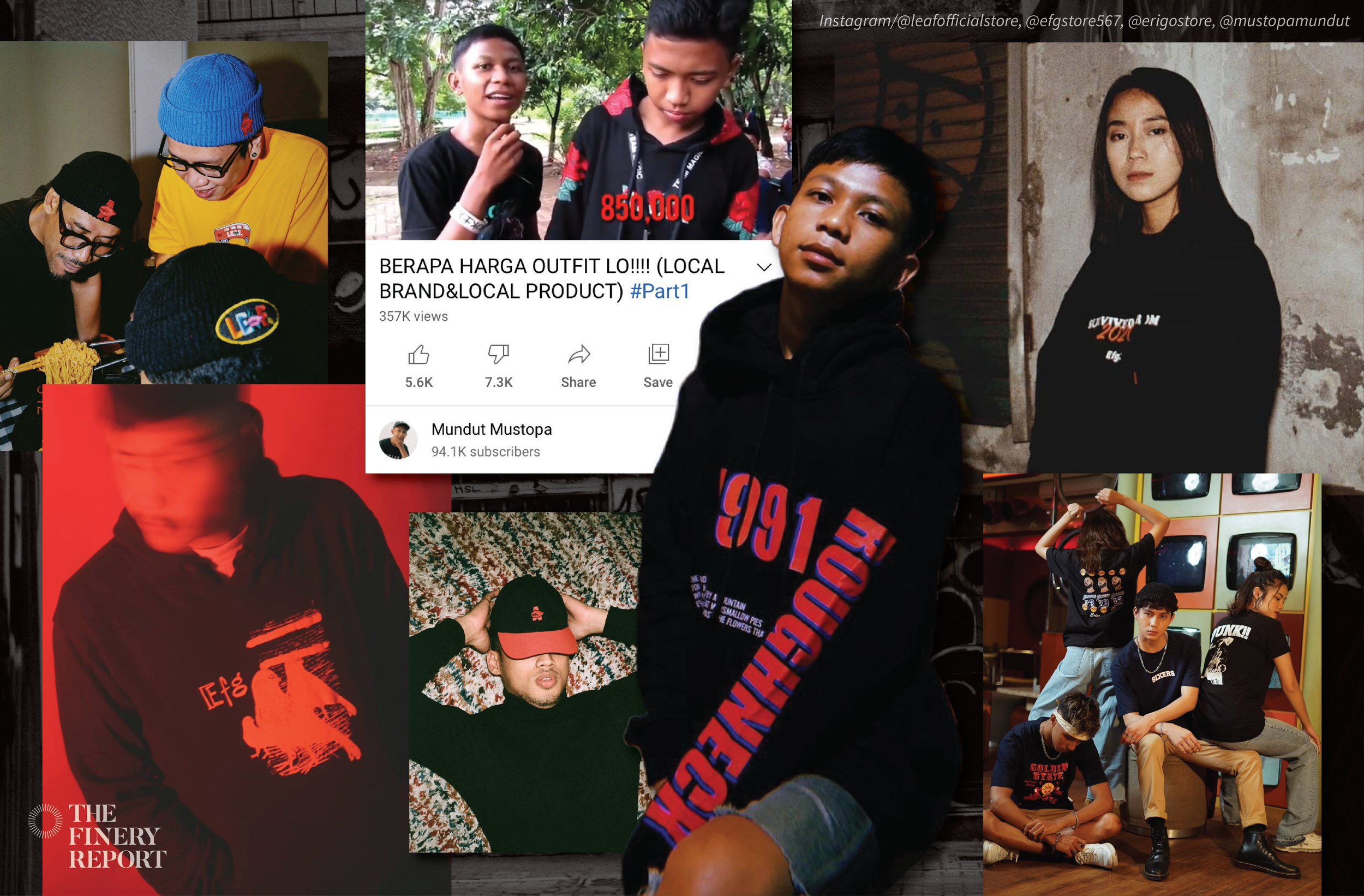Mundut Mustopa and local streetwear movement
Read in Indonesian
“It started from the question 'how much is your outfit?' I watched and liked on YouTube. But they mostly (review) foreign brands, so I wanted to try to make one because no one is yet to make 'how much is your local outfit.' I join several communities and I also have an organisation. It was for fun at first,” Mundut Mustopa told The Finery Report.
Mundut Mustopa, a young man who currently resides in Karawang and is known for his distinctive reviews with the main question 'how much is your outfit?,' rose to fame to become one of the 'faces' of the local streetwear scene, especially for middle to lower class consumers. Some people may hear the name Mundut Mustopa for the first time when he was part of the skit of famous comedian Pandji Pragiwaksono, where the comic called Mundut’s channel a must-visit channel when we are feeling sad.
In the skit, Pandji also underlined the mocking comments that often appear in Mundut's videos. But Mundut, despite his young age, is able to respond to those mockery with maturity. In fact, he collaborated with Pandji to create content. Without realising it, Mundut has become a streetwear icon who voices the aspirations of the Indonesian lower middle class consumers.
It is not surprising that the lower middle class has a special interest in fashion and clothing trends. That is because, according to the Indonesian Fashion Chamber (IFC), middle and lower class consumers have the highest interest in following trends. On the contrary, middle and upper class consumers have their own criteria and brands in choosing clothes.
When discussing streetwear, there are some terms that can't escape the spotlight, such as hypebeast. Hypebeast is a term for those who use hype or trendy items when they are launched. This word is often used as a slang to describe someone who is obsessed (beast) and does everything they can to acquire fashionable items to follow the hype.
Uniquely, the activity that is often carried out by streetwear lovers is hypethrift, which is basically buying and wearing used clothes that are usually purchased at thrift shops or second-hand shops. Mundut also commented on the thrifting phenomenon and its role in the local streetwear scene. “I think there are more and more local brand enthusiasts now, because we compete with several thrifting shops. Because thrifting is also a part of streetwear,” he said.
The thrifting phenomenon is actually in contrast to the origin of hypebeast which is now closely linked to high-end luxury brands with high prices. This is due to the increasing number of collaborations between streetwear labels and fashion labels or expensive accessories by well-known designers, such as the collaboration of Louis Vuitton fashion house with Supreme or Dior with Nike.
Historically, streetwear has been associated with the skateboarding and hip hop communities. Because it is an urban clothing style, streetwear pieces tend to be comfortable and have simple cuts, such as hoodies and t-shirts. Hip hop fashion was initially a form of rejection to the capitalism of the fashion industry. It later transformed into a culture6. In essence, streetwear is not just a style of dressing, but a cultural expression and non-verbal communication tool that can convey various messages.
A study on streetwear culture in Surabaya found that streetwear consumption of urban youth in the city is an individual consumption activity. They consume an item or object not based on its use value, but on its symbolic elements that represent culture, class, gender and social status.
It can be concluded that the community element plays an important role in streetwear culture, and Mundut agrees with that. "I join a clothing organisation, I also often visit clothing events," said Mundut. Even so, Mundut admitted that his streetwear community activities have changed somewhat since the COVID-19 pandemic hit.
“In the past, most people visited stores to buy and promote. There were also events outside and in the city where Mundut lives. [I] Often do meet-ups with local brands too, now it's more about talking [about streetwear] with the media. Amid the coronavirus pandemic, it's difficult to have events, store visits are also limited," he added.
His community favours several brands, including Leaf, Dreambirds, EFG and, currently, Erigo. Local brands mentioned by Mundut are not only famous in Indonesia, but also have penetrated abroad. Erigo, for example, was founded in West Java in 2011 and started to spread its wings to the United States in April 2021. Its founder, Muhammad Sadad, posted an advertisement for the brand in New York Times Square a few months ago.
Dreambirds, a label that has been around since 2009, has also penetrated overseas markets, especially European countries. The unique element that Dreambirds offers is the inclusion of artworks in its products. Dreambirds is an independent brand that still sells a limited quantity of products. This is because the founders believe that everyone wants to have a unique appearance.
What is clear is that the success of various local streetwear brands in the domestic and overseas markets is inseparable from the support of local streetwear communities. They, according to Mundut, often act as an unofficial ambassador for many local brands.
“The interesting thing about the streetwear community in Indonesia that not many people know is that they support local brands, in my opinion. Then they buy, promote as well; they develop local brands,” said Mundut. These communities are also aggressively providing information about new brands they find so that other people learn about the existence of those brands.
It seems that it is time for Indonesian products to make its mark in the local and international markets as the opportunity is wide open, and the Indonesian streetwear community is ready to support them in its own way.













